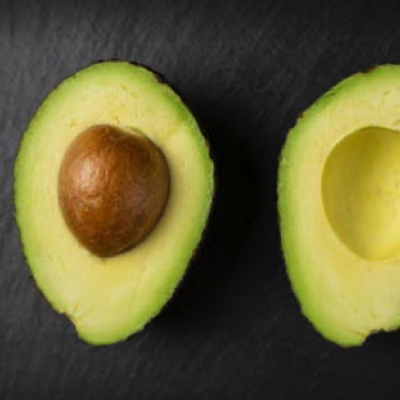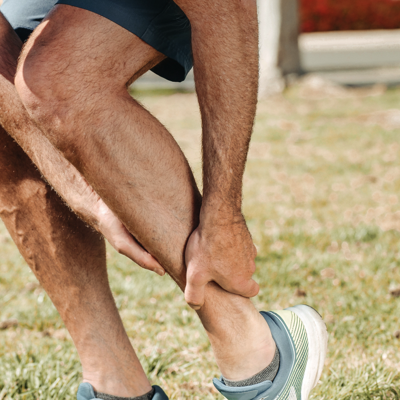“There is an App for that”… If you have been around a while and saw the early rise of smart phones that could load and run bespoke applications, you will probably remember the expression. And when it comes to participation sport, there is no shortage of “apps” to help you stay engaged. track your progress and train in a structured meaningful way.
But which ones to use? There is of course no right or wrong answer, but if you are looking for somewhere to start or wanting put together a more comprehensive eco system, this post might give you some inspiration.
Training Peaks (1)
Have used TrainingPeaks for a few years as an athlete, I still think it is head and shoulders above anything else as a full service training platform. I now use it as the technology that supports my online coaching.
The real strength of TP is the easy with which it lets you build a periodised training plan and then populate the sessions for each day. But having done that it is then exceptional at providing analytics tools to help you understand exactly what happened and how well the session met its intended purpose.
No platform is perfect and, and there are two areas in which TP is weak:
- TrainingPeaks comes from the world of endurance sport and is really a tool for endurance athletes; Triathletes. runners or cyclists. Whilst it can schedule Strength & Conditioning sessions it is not great at handling these. Certainly it does not try to offer any workout tools for people that lift weights. If this is something you do once or twice a week, it will be fine. You can write the programme as a comment or you could link to an external spreadsheet. Feedback is mostly limited to did you do it and how hard overall was it.
- Analysing performance data is very much the sweet spot for TP, but capturing it is not the best experience. Which is precisely the point of this post; you need to build an eco-system of supporting apps that are excellent at what they do.
But without a doubt when it comes to seeing a single holistic view of your training status, then TP should be at the centre of your training eco-system.
Strava (2)
Side by side with the analytic power house of TrainingPeaks is the Social and gamified experience that is Strava. Again a platform that I have used for a long time and love the subtle gamification that they bring to what is essentially a social media platform for runners and cyclists.
Whilst it does offer some rudimentary tools, in truth it is serves little purpose other than as a data repository. Yes it give some very lightweight analysis, but offers nothing in terms of planning a week / month or year, building a workout or any other forward looking task. However, don’t underestimate the motivational effect of logging your training sessions on a social platform and getting feedback and recognition from your peers! With the introduction of “local legends”, segments and KOM / QOM, clubs and virtual events – Strava had (yes “had”!) it nailed. As good a platform as it is, I can’t help wondering if it is failing to innovate and it’s offer is perhaps a little tired now?
As with TrainingPeaks, Strava is not the place for people that are doing gym based exercise or classes. Such activity being tagged as “other” with little recorded other than the duration. Again, if lifting and squatting is your bag then you are probably in the wrong place with Strava.

Zwift (7)
Whilst on the subject of gamification and social interaction, Zwift is the new kid on the block that has really eaten all the established players lunches! To get the best from Zwift you will need a SMART trainer and an HR strap (bluetooth is going to make most set ups a lot easier).
At one level it’s a VR game. You peddle (or run…) through different virtual worlds based on imaginary or famous locations. A big part of this is about group riding, be that in a social group or racing. But at another level Zwift becomes a series training tool. Enabling you to execute detailed session plans, and with a SMART turbo, zwift will increase / reduce the resistance dynamically forcing you to produce the right output. Running is supported, but in my eco-system this app is just about cycling.
TP can send session plans to Zwift so these come straight from my periodised plan. Post ride Zwift sends power, cadence, HR, time, speed data to TP enabling detailed analysis. In parallel I also send the same ride data to Strava for social gratification!
Just to note that across all the eco-system, uploads / downloads and synchronisation is automatic and seamless.
Garmin Connect (3)
The Garmin platform offers something akin to a training platform in its own right, but frankly I don’t find it as useful as TP. It has social functions but again, frankly, it is not a patch on Strava. It also offers a virtual training mode with a ghost pacer… But this is so rudimentary that I would not even remotely compare it to Zwift!
But for all of that, I am the biggest fan of Garmin hardware and think they offer some of the best sports devices available. Garmin Connect is the obvious solution to act as a data synch between the sports device and TP. Worth noting that this is a bi-directional process.
A run or bike sessions planned for a given day flows to the appropriate device. In my set up this would likely be my 735xt watch or if it was a bike session and I was doing outdoors (rather than on Zwift) it would end up on my 1030 Edge.
Whilst most Garmin watches offer wrist based HR, I find it a bit unreliable. Therefore running or cycling I prefer the Garmin strap. Regardless of brand a bluetooth (rather than ANT+) makes senses as it will simply your Zwift set up.
Post run HR, distance, time, calories, pace, cadence are all sent back to TP. If it was a bike session then Power (using the Vector3 peddles), HR, time, speed, RPM are synched back. So either way, you have all the data you need back into your training platform.
One of the reasons I like the 735 is it’s performance as a swim watch, reporting back time distance and stroke rate. Adding an appropriate HR Strap (which I don’t use) you would also get HR data back. If training for a triathlon then this is going to matter to you.
Withings Health (4)
Withings make a number of biometric sensors such as blood pressure meters, but I only use their digital scales. And to be fair, their most basic version. More sophisticated scales offer impedance based body mass composition.
I weigh each day and that reading is synched back to my calendar in TP. Whilst my weight will fluctuate on a daily basis responding to the type of training I am doing and the associated inflammation / fluid retention, what I am actually interested in is the trend of weeks & months. Therefore plotting a daily marker I feel tends to give best results.
As a side point, too often I hear people talk about throwing out the scales as your weight does not matter and it’s more to do with how you look and feel. This is delusional in my view! Whilst your weight is not the full story, it certainly is a something that is quantifiable and adds to the overall picture. Do not throw the scales out.
My Fitness Pal (5)
Probably the most sophisticated and certainly one of the most popular food diary apps. I want to know, on a daily basis what my calorific intake is as well as the macro nutrient content of my food.
MFP makes food logging really easy. You can scan barcodes on packaging if you are using pre-prepared or quickly type in the ingredients you are using. There are some very sophisticated features around meals and favourite recipes, as well as the ability to import recipes from other sites..
On a daily basis this means that I have not only my weight for the day, a summary of my expended energy in training, but the final part of the training jigsaw which is how many calories I took on board.
HRV4 (6)
The newest addition to my eco-system is an app to measure Heart Rate Variability. I plan to write a specific post describing much more about what HRV is (although of course if you google it now you will find a lot of information generally available).
The more pertinent question for this post is why do I care about it. In high level terms your HRV “score” (and how your score fits into a trend) gives a strong insight into how much stress your body is under, how it is doing at recovering from recent training and therefore how ready you are to train TODAY.
Measurement is easy and uses your phones camera. Best results, measure once a day at the same point in the day, ideally just before you get out of bed in the morning.
In order to better analyse your HRV, and therefore give you the most accurate recommendation, the app draws in your previous days training data from TP. This of course is very “rich” in terms of data as you will recall this all originated from sports wearable devices. The app will then give you a personalised recommendation and brief summary and your status in terms of readiness to train.
You can use this to adjust your plan, if you are not ready for a high intensity session then simply swap it for something less intense.
Your HRV score and rating is also synched back to TP to add yet another dimension and more depth to your daily overview.
In Conclusion
It’s a lot of data! But the beauty of this eco-system is that it provides very understandable and easy to digest summaries. There is a good mix of using technology for fun and motivation. As well as leveraging some serious analytical software to really be on top of your training plan. Most important once plumbed together it all works seamlessly and transparently.
You will have gathered, I love data, science and technology! That aside though, the more data points and markers you can put into a model (in this case the model representing your physiological status relative your plan) then the more accurately you can plan and adapt what you need to do. As a self coached athlete this provides you with many useful markers and insights. But of course you don’t have to use them all.
From a coaching perspective I struggled with how to meaningfully coach someone that I never saw. The first rule of coaching being “coach what you see”! Depending on the coaching plan you are on; then we would reproduce the majority of this eco-system for you. And actually this then gives me a VERY ACCURATE picture of what is happening with you and how you are progressing. Works brilliantly for Nutrition, Strength & Conditioning and endurance fitness.
One pillar is missing – and that is technique. To coach technique you really do need to SEE what the athlete is doing. No two ways about it. Enter Coaches Eye, a video analysis app that enables the detailed analysis and feedback based on short video files that you can get a friend to record of you running using just a basic smart phone. More about Coaches Eye another time as this post is really aimed at apps you might use as a self coached athlete.
And that describes my eco-system as it is today. But very exciting times and I would guess that in just twelve months time this picture will look very different and there will be some more “game changing” apps. Who knows, I might just write one 😉
Interested in this topic?
To receive a monthly discount code (for use in my online shop for runners) as well as tips and advice about endurance training, please subscribe to my email list.



